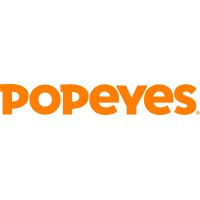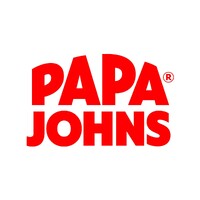
Darden Company Cyber Security Posture
darden.comDarden is a restaurant company featuring a portfolio of differentiated brands that include Olive Garden, LongHorn Steakhouse, Yard House, Ruth's Chris Steak House, Cheddar's Scratch Kitchen, The Capital Grille, Seasons 52, Eddie V's, and Bahama Breeze. Our people equal our success, and we are proud to employ 190,000 team members in more than 2,000 restaurants. Together, we create memorable experiences for 380 million guests each year in communities across North America.
Darden Company Details
darden
71807 employees
96248.0
722
Restaurants
darden.com
Scan still pending
DAR_1431026
In-progress
Between 900 and 1000
This score is AI-generated and less favored by cyber insurers, who prefer the TPRM score.
 Darden Global Score
Darden Global Score.png)

Darden Company Scoring based on AI Models
| Model Name | Date | Description | Current Score Difference | Score |
|---|---|---|---|---|
| AVERAGE-Industry | 03-12-2025 | This score represents the average cybersecurity rating of companies already scanned within the same industry. It provides a benchmark to compare an individual company's security posture against its industry peers. | N/A | Between 900 and 1000 |
Darden Company Cyber Security News & History
| Entity | Type | Severity | Impact | Seen | Url ID | Details | View |
|---|---|---|---|---|---|---|---|
| Darden | Breach | 85 | 4 | 08/2018 | DAR21487922 | Link | |
Rankiteo Explanation : Attack with significant impact with customers data leaksDescription: Darden reports possible data breach at Cheddar's Scratch Kitchen. Guest data from certain of its Cheddar’s Scratch Kitchen restaurants may have been compromised in cyber attack incident. The Olive Garden owner said its systems and networks were unaffected by the incident. Information from about 567,000 payment card numbers may have been exposed through affected restaurants in 23 U.S. states. The company said it had disabled and replaced the legacy system as part of the merger integration process. Darden has engaged a third-party forensic cyber security firm to investigate the incident. | |||||||
Darden Company Subsidiaries

Darden is a restaurant company featuring a portfolio of differentiated brands that include Olive Garden, LongHorn Steakhouse, Yard House, Ruth's Chris Steak House, Cheddar's Scratch Kitchen, The Capital Grille, Seasons 52, Eddie V's, and Bahama Breeze. Our people equal our success, and we are proud to employ 190,000 team members in more than 2,000 restaurants. Together, we create memorable experiences for 380 million guests each year in communities across North America.
Access Data Using Our API

Get company history
.png)
Darden Cyber Security News
William Blair Bolsters Cybersecurity Investment Banking With Senior Hire
William Blair's investment banking group enables corporations, financial sponsors, and owner/entrepreneurs around the world to achieve their ...
8 ODU Graduates Honored as Outstanding College Scholars
About Lauren-Elise: While completing her studies, she developed a dance-integrated enrichment program curriculum for Ukrainian refugee children, ...
The people have spoken: 2024 Best of Central Valley Business winners unveiled
It was an evening of superlatives at Pardini's in Fresno on Wednesday as the 2024 winners of the Best of Central Valley Business Readers' Choice ...
“Cybersecurity Finds You”: An Interview with Rockwell Automation’s CISO
We spoke to Darden Ford recently about her recommendations, as well as Rockwell's efforts to safeguard its own supply chain and provide services to other ...
UVA Darden Alumni-Led Cybersecurity Venture Draws Significant Funding, High-Profile Clients
The University of Virginia Darden School of Business prepares responsible global leaders through unparalleled transformational learning experiences.
Coursera Introduces New Gen AI Skills Training and Credentials
Learning platform Coursera is expanding its Generative AI Academy training portfolio with an offering for teams, as well as adding new ...
UVA Darden Offers 16 New Courses for 2021–22 Academic Year
The course aims to expose students to a range of emerging issues and topics faced by startups, multinational companies and nonprofit ...
Darden Boosts Annual Sales Forecast on Strong Q4 Earnings, 4.6% Sales Growth
Darden's same-store sales are projected to grow between 2% and 3.5% for the year, with the midpoint exceeding analyst estimates of 2.64%.
CyberEdBoard Profiles in Leadership: Nicole Darden Ford
From working in B2B industries to now shifting to a B2C industry, Nicole Darden Ford, CISO, Nordstrom, is confident of bringing a fresh perspective to ...

Darden Similar Companies

Raising Cane's Chicken Fingers
Founded by Todd Graves in 1996 in Baton Rouge, La., RAISING CANE'S CHICKEN FINGERS has over 800 restaurants in 41 states, with many new restaurants under construction. The company has ONE LOVE®—craveable chicken finger meals—and is continually recognized for its unique business model and customer sa

Popeyes Louisiana Kitchen
Founded in New Orleans in 1972, POPEYES® has more than 45 years of history and culinary tradition. Popeyes distinguishes itself with a unique New Orleans-style menu featuring spicy chicken, chicken tenders, fried shrimp, and other regional items. The chain's passion for its Louisiana heritage and fl

Chick-fil-A Restaurants
Chick-fil-A, Inc. is the third largest quick-service restaurant company in the United States, known for its freshly-prepared food, signature hospitality and unique franchise model. More than 200,000 Team Members are employed by independent Owner-Operators in more than 3,000 restaurants across the Un

Life Cafe Lifetime Fitness
Life Cafe Lifetime Fitness is a Restaurants company located in 9602 Main St, Fairfax, Virginia, United States. Show more Show less

Papa Johns
Papa Johns seeks people who have an entrepreneurial spirit and share our philosophy for success. Hands-on training, a clean and safe work environment, quality business practices, advancement opportunities and meaningful work combine to produce not only the best pizza, but also the best team members!

The Wendy's Company
Wendy's was founded in 1969 by Dave Thomas in Columbus, Ohio. Dave built his business on the premise, “Quality Is Our Recipe®”, which remains the guidepost of the Wendy's system. Wendy's is best known for its made-to-order square hamburgers, using fresh, never frozen beef*, freshly-prepared salads,

Frequently Asked Questions
Explore insights on cybersecurity incidents, risk posture, and Rankiteo's assessments.
Darden CyberSecurity History Information
How many cyber incidents has Darden faced?
Total Incidents: According to Rankiteo, Darden has faced 1 incident in the past.
What types of cybersecurity incidents have occurred at Darden?
Incident Types: The types of cybersecurity incidents that have occurred incident Breach.
How does Darden detect and respond to cybersecurity incidents?
Detection and Response: The company detects and responds to cybersecurity incidents through third party assistance with forensic cyber security firm and remediation measures with disabled and replaced the legacy system.
Incident Details
Can you provide details on each incident?

Incident : Data Breach
Title: Darden Reports Possible Data Breach at Cheddar's Scratch Kitchen
Description: Guest data from certain of its Cheddar’s Scratch Kitchen restaurants may have been compromised in a cyber attack incident. The Olive Garden owner said its systems and networks were unaffected by the incident. Information from about 567,000 payment card numbers may have been exposed through affected restaurants in 23 U.S. states. The company said it had disabled and replaced the legacy system as part of the merger integration process. Darden has engaged a third-party forensic cyber security firm to investigate the incident.
Type: Data Breach
What are the most common types of attacks the company has faced?
Common Attack Types: The most common types of attacks the company has faced is Breach.
Impact of the Incidents
What was the impact of each incident?

Incident : Data Breach DAR21487922
Data Compromised: payment card numbers
Payment Information Risk: High
What types of data are most commonly compromised in incidents?
Commonly Compromised Data Types: The types of data most commonly compromised in incidents are payment card numbers.
Which entities were affected by each incident?

Incident : Data Breach DAR21487922
Entity Type: Restaurant
Industry: Food and Beverage
Location: 23 U.S. states
Customers Affected: 567,000
Response to the Incidents
What measures were taken in response to each incident?

Incident : Data Breach DAR21487922
Third Party Assistance: forensic cyber security firm
Remediation Measures: disabled and replaced the legacy system
How does the company involve third-party assistance in incident response?
Third-Party Assistance: The company involves third-party assistance in incident response through forensic cyber security firm.
Data Breach Information
What type of data was compromised in each breach?

Incident : Data Breach DAR21487922
Type of Data Compromised: payment card numbers
Number of Records Exposed: 567,000
Sensitivity of Data: High
What measures does the company take to prevent data exfiltration?
Prevention of Data Exfiltration: The company takes the following measures to prevent data exfiltration: disabled and replaced the legacy system.
Post-Incident Analysis
What is the company's process for conducting post-incident analysis?
Post-Incident Analysis Process: The company's process for conducting post-incident analysis is described as forensic cyber security firm.
Additional Questions
Impact of the Incidents
What was the most significant data compromised in an incident?
Most Significant Data Compromised: The most significant data compromised in an incident was payment card numbers.
Response to the Incidents
What third-party assistance was involved in the most recent incident?
Third-Party Assistance in Most Recent Incident: The third-party assistance involved in the most recent incident was forensic cyber security firm.
Data Breach Information
What was the most sensitive data compromised in a breach?
Most Sensitive Data Compromised: The most sensitive data compromised in a breach was payment card numbers.
What was the number of records exposed in the most significant breach?
Number of Records Exposed in Most Significant Breach: The number of records exposed in the most significant breach was 567.0K.
What Do We Measure?
















Every week, Rankiteo analyzes billions of signals to give organizations a sharper, faster view of emerging risks. With deeper, more actionable intelligence at their fingertips, security teams can outpace threat actors, respond instantly to Zero-Day attacks, and dramatically shrink their risk exposure window.
These are some of the factors we use to calculate the overall score:
Identify exposed access points, detect misconfigured SSL certificates, and uncover vulnerabilities across the network infrastructure.
Gain visibility into the software components used within an organization to detect vulnerabilities, manage risk, and ensure supply chain security.
Monitor and manage all IT assets and their configurations to ensure accurate, real-time visibility across the company's technology environment.
Leverage real-time insights on active threats, malware campaigns, and emerging vulnerabilities to proactively defend against evolving cyberattacks.




